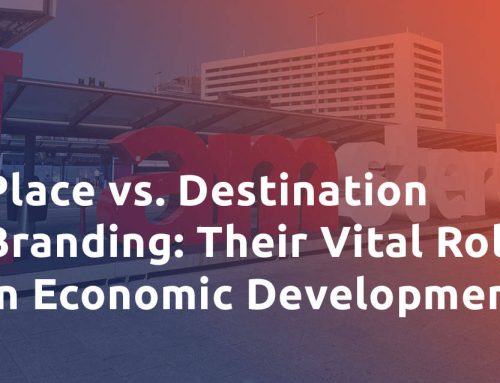In today’s rapidly evolving global economy, the success and competitiveness of local economies are heavily reliant on a skilled and adaptable workforce. Thus, workforce development programs play a pivotal role in shaping the economic landscape of any country or region. These programs are designed to enhance the skills, knowledge, and capabilities of the workforce, ensuring they remain competitive, adaptable, and relevant in an ever-evolving job market.
This two-part article explores the crucial role of workforce development programs in nurturing economic growth and development.
In the first part of this two-part article, we will explore the importance of workforce development programs, the key elements of an effective program, and their positive impact on economic growth and development. Stay tuned for part two next week, where we will provide our guide on enhancing economic growth through workplace development trainings designed for economic development professionals.
What is Workforce Development?
Workforce development can be defined as a comprehensive set of strategies, programs, and initiatives aimed at enhancing the skills, knowledge, and capabilities of the workforce in a particular region or industry. These trainings are aimed at enhancing the capabilities of the workforce, ensuring they stay relevant and adaptable in their respective industries. Workforce development programs can encompass a wide range of areas, including technical skills, soft skills, leadership development, and industry-specific knowledge.
Workforce development training not only allows individuals to stay up-to-date and competitive in their fields but also encourages innovation and productivity within companies. By investing in the development of the workforce, businesses can build a more skilled workforce, which improves job satisfaction, reduces turnover, and ultimately, provides higher organizational success. Furthermore, workforce development training also has a positive impact on communities as it creates a more competent and adaptable workforce, contributing to economic growth and overall societal advancement.
As a result, by investing in workforce development, governments, businesses and organizations foster a more competitive and resilient labor force, leading to increased productivity and reduced unemployment.
Understanding the Importance of Workforce Development for Economic Growth
Workforce development plays a crucial role in fostering economic growth and development. As industries and technologies continue to evolve, it is essential that the workforce also evolves in order to meet market demands. Investing in workforce development ensures that businesses have a skilled workforce capable of driving innovation, increasing productivity, and staying competitive in the global market.
However, workforce development offers benefits beyond just companies. Workforce development contributes to the overall economic growth and development of a region. Through bridging the skills gap, enhancing the competitiveness of a region and finally through fostering economic resilience, workforce development programs create educated and skilled workforces, attracting foreign investments, thus leading to economic expansion and job creation.
Bridging the Skills Gap
The skills gap is one of the largest challenges that today’s workforce faces. As industries and technologies continue to evolve, there is a growing mismatch between the skills and qualifications possessed by the available workforce and the skills required by employers to fill specific job roles effectively. It is a significant challenge faced by businesses and industries, with McKinsey reporting that, 40% of American employers are struggling to find people with the skills they need, even for entry-level jobs. Workforce development programs have emerged as crucial tools in bridging the skills gap. These programs address the growing need for a highly skilled and adaptable labor force by providing individuals with relevant training and education that aligns with the demands of the job market. By focusing on both hard and soft skills, these initiatives empower participants to acquire competencies that match the evolving needs of various industries. Thus, these programs not only help individuals secure gainful employment but also contribute significantly to economic growth and overall social well-being of a region by fostering a competent and capable workforce.
Enhancing Competitiveness
Workforce development programs not only bridge the skills gap but also enhance a region’s competitiveness. These programs promote the development of a skilled and versatile workforce, which in turn attracts investments from companies looking for qualified professionals. This leads to the creation and expansion of businesses in the area. Furthermore, skilled workers drive innovation, adopt cutting-edge technologies, and contribute to the development of new products and services, thereby positioning their regions as leaders in their respective industries. Ultimately, a region with a strong focus on workforce development can position itself as an attractive destination for businesses, talent, and economic growth, bolstering its overall competitiveness in the national and international marketplaces.
Fostering Economic Resilience
In addition to enhancing competitiveness, workforce development programs also foster economic resilience. In a fast-paced job market, individuals need to stay relevant and adaptable to remain employable. By continuously learning and upskilling, individuals can weather economic fluctuations and remain valuable assets to businesses. Investing in workforce development enables communities to build a well-trained and versatile workforce that can quickly pivot to meet the demands of emerging industries or adapt to changes in the labor market, reducing the impact of economic downturns. Furthermore, workforce programs encourage lifelong learning, empowering workers to embrace continuous education as an integral part of their professional growth, enabling continuous upskilling and reskilling. By fostering a robust and adaptable workforce, workforce development programs strengthen the foundation of the economy, making it more resilient to external shocks and challenges. This resilience not only sustains economic growth in times of uncertainty but also fosters an environment conducive to attracting new investments and creating opportunities for further development and prosperity.
Developing Effective Workforce Development Programs
To reap the benefits that workforce development can offer, it is crucial to ensure that these programs are effective and target the areas most needed. However, developing effective workforce development programs is often a struggle due to a number of interconnected and complex factors. Due to the diverse and dynamic nature of many industries, these programs often struggle to be responsive enough to address evolving industry needs. Furthermore, fostering the needed partnerships between educational institutions, employers, and government entities can be complex, as their differing priorities and approaches need to be harmonized for the program’s success. Finally, addressing the diverse needs of the program’s participants, which includes the varying skill levels and backgrounds, also requires an adaptable and inclusive approach. Overcoming these challenges and developing an effective workforce development program can be difficult.
Based on extensive research on global workforce-development programs and economic strategies, McKinsey has identified five principles that should be the foundation of developing workforce-development programs.
1. Define Geographic Assets and Target Professions
To build effective workforce-development programs, it is essential to start by defining geographic assets and identifying target professions. Local and state agencies must gain a comprehensive understanding of their starting point, considering the complexities of local economies. Job-market analyses should be conducted to identify sectors with high growth potential and workforce shortages. Collaboration between industry leaders, education providers, government agencies, and trade associations in identifying the highest priorities on which to focus has also proven to yield the best results.
2. Deliver ROI to Employers and Workers
To gain buy-in from employers and participants it is crucial that the return on investment (ROI) for workforce-development programs is evident. The current lack of evidence linking these programs to business performance has made employers more hesitant to participate or fund them. Thus, metrics should be developed to track the cost of program recruitment and training, employer productivity and retention rates, and speed to promotion.
3. Support Comprehensive, Demand-Driven Training
The success of workforce-development programs depends on comprehensive and demand-driven training approaches. Successful programs involve employers from the start, utilizing on-the-job observations of high-scarcity or high-turnover professions to reveal the critical skills needed for success. Furthermore, collaboration between employers, employees and training providers that places a focus on accessibility regarding the delivery approach of the trainings has proven to yield higher completion rates, ensuring the efficiency and effectiveness of these programs.
4. Assess and Prepare Learners
Effective workforce-development programs start by ensuring that learners meet the necessary requirements for their chosen professions and preparing them for the training. This can be done through basic screenings aimed at assessing skill levels and transparency regarding the job they are training for, including its positive and negative aspects. Assessing and preparing learners has proven to improve retention in both the program and the subsequent employment and ensures that program resources are allocated to those most likely to benefit.
5. Coordinate the Workforce-Development Process Centrally
Finally, a central coordination approach is needed to optimize the impact of workforce-development programs. Currently, despite the growing popularity of workforce development programs and the substantial investments in these programs, many continue to operate in isolation without integration with other essential services, hindering the learner’s success in completing training, finding employment, and succeeding in their career. Thus, to ensure the effectiveness of these programs, the workforce development process requires coordinated efforts among different entities, with clear outcome goals and provision of necessary support for learners.
In Conclusion…
Workforce development programs play a pivotal role in fostering economic growth and development in our ever-changing world. These initiatives not only equip individuals with the necessary skills and knowledge to meet the demands of the job market but also contribute to building a resilient and competitive workforce. By investing in continuous learning and upskilling, regions and businesses can empower their workforce to adapt to technological advancements and industry shifts, positioning them at the forefront of innovation and productivity.
- More from ResearchFDI:







